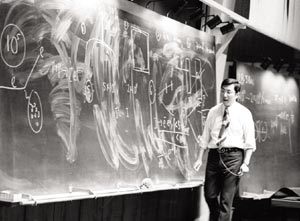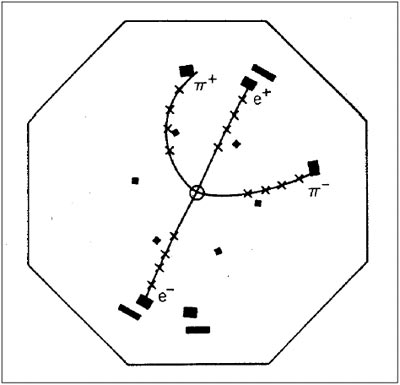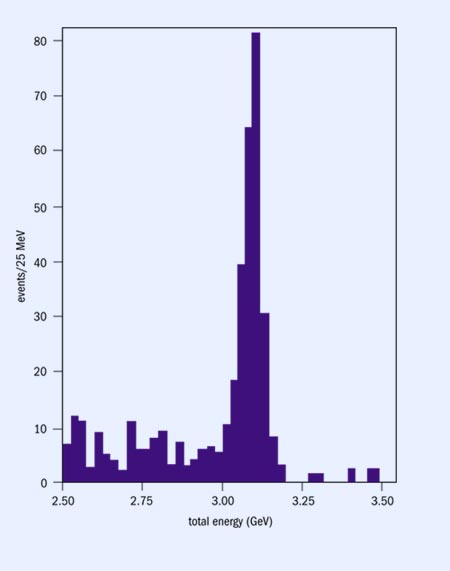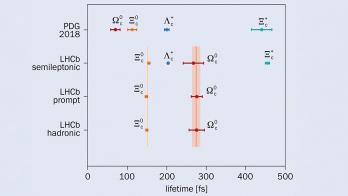Frank Close goes back 30 years to when he first heard of the remarkable results from Brookhaven and SLAC that heralded the discovery of the fourth quark, charm.
I first heard about the J, or J/Ψ as it would become, in Jacques Prentki’s office at CERN, immediately after lunch on an unforgettable afternoon in November 1974. At that time I was in the theory group at CERN, and responsible for organizing the phenomenology seminars. That day the speaker was Yair Zarmi from the Weizmann Institute, and his topic was inclusive hadron production in the quark parton model, on which he had written a much quoted paper with Michael Gronau and Finn Ravndal. Up to lunchtime that day it seemed extremely interesting.

Walking back to my office after lunch I noticed three people in Jacques Prentki’s office, and Jacques himself was looking agitated. I heard the words: “Hey, Frank, come look at this!” I cannot recall who the third person was, but the central character was a French experimentalist named Jean-Jacques Aubert. He was a member of Sam Ting’s group at the Brookhaven National Laboratory, and there in Prentki’s office, for the very first time, I saw the famous plot of their “J” particle. It was sharp, tall and narrow, and 3 GeV in mass, which in those days was heavy. It was astonishing.
Zarmi gave his seminar, but I don’t remember anything about it – all I can recall is that afterwards the questions weren’t about his talk; they were all about the rumours that a new particle had been found. Then hot news arrived: Aubert would give a special seminar later that afternoon in the Theory Discussion Room.

I arrived early, but it was almost too late – it was already standing room only. News spread fast around CERN, even in the days before Tim Berners-Lee invented the Web. Jack Steinberger opened the proceedings with this statement: “It is good to hear of something that we can really believe in.” He briefly explained the circumstances, then introduced “Professor Aubert”.
Jean-Jacques began by saying, somewhat apologetically, “I am not a professor”, to which Steinberger instantly retorted, “You will be!” Of course, Steinberger was right, and in 1982 Aubert became professor at the Université de la Méditerranée in Marseilles, where he later created the Centre for Particle Physics.

Somewhere in all of this we learned that SLAC had seen it too. And then we heard that Ting was en route from the US to give an official presentation at CERN in the auditorium.
The search for charm
Ting gave his talk and wrote an enormous “J” on the board at CERN. On that occasion, the J was also in honour of J-J Aubert. The auditorium was overflowing and there was prolonged applause.
Soon afterwards, details reached CERN of the discovery of the same particle by Burton Richter and colleagues working on the Mark I detector at SLAC, where they called it the “psi” (Ψ). Then, a week later, Sacha Dolgov stopped me in the corridor: “SPEAR has found another one.” This was the Ψ‘. This too was narrow.

John Bell soon organized a special session where the data would be presented and three theorists would review the ideas. Mary Gaillard, who with Ben Lee and Jonathan Rosner had already drafted a seminal paper, “The search for charm”, naturally reviewed charm; Dolgov reviewed the possibility that this (these!) could be the long-sought Z boson (the discovery of the real one was still a decade in the future), and I was given the task of discussing colour. I was enthusiastic about this because, according to rumour, Richard Feynman had said that a new quantum number must be involved to make it narrow, and Jacques Prentki had said “It’s not charm.” What we were not up to speed with was the phenomenon of asymptotic freedom, which proved to be so vital for understanding the bizarre properties of these particles (and which has this year been recognized with the award of a Nobel prize.
The impact of the news we all heard on that November day 30 years ago was such that Yair Zarmi’s talk, and the whole area in which it fell and on which I had been devoting my effort, lay dormant in my notebook. We dropped everything and turned to the only problem in town. Two years later, after it had become undisputedly clear that the J/Ψ was the first example of a new type of quark – charm – bound with its antiquark, Ting and Richter shared the Nobel prize for their discovery, a vital step in building the current Standard Model of particles and interactions.







